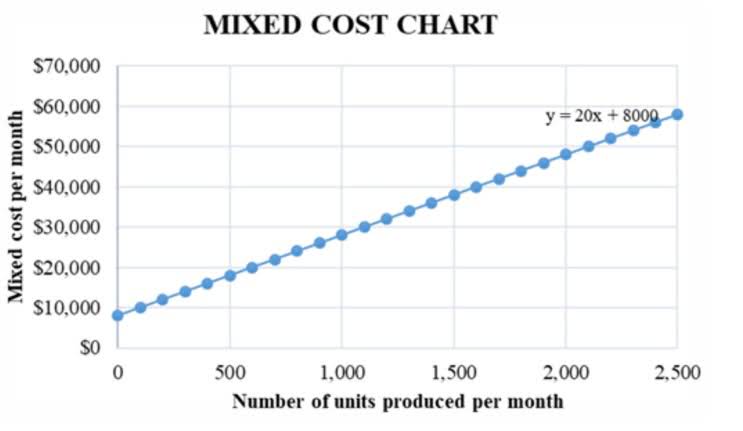
In this case, each additional unit costs $50 ($500 divided by 100 units), making it easier for ABC Manufacturing to evaluate the profitability of the promotional campaign. When the two are compared, it is evident that the incremental revenue exceeds the incremental cost. So, you get a profit of $4,000,000 by deducting the incremental cost from the incremental revenue. You calculate your incremental revenue by multiplying the number of smartphone units by the selling price per smartphone unit. You calculate your incremental cost by incremental cost multiplying the number of smartphone units by the production cost per smartphone unit.
- By providing a clear comparison between the costs and benefits of various interventions, ICER helps guide decisions that optimize both patient outcomes and financial sustainability.
- Let us assume you are in the shirt manufacturing business and spend $100,000 to make 10,000 shirts.
- A restaurant with a capacity of twenty-five people, as per local regulations, needs to incur construction costs to increase capacity for one additional person.
- Incremental analysis often involves calculating the contribution margin, which is the difference between sales revenue and variable costs.
How do you calculate the incremental cost at different scales of production?
The company wants to add another product, ‘Y,’ for which it incurs some cost in terms of salary to the additional labor force, raw materials, and assuming that there was no machinery, equipment, etc., added. Incremental revenue is compared to baseline revenue to determine a company’s return on investment. The two calculations for incremental revenue and incremental cost are thus essential to determine the company’s profitability when production output is expanded. The calculation of incremental cost needs to be automated at every level of production to make decision-making more efficient.
Navigating Crypto Frontiers: Understanding Market Capitalization as the North Star
- Sunk costs, or past expenditures that cannot be recovered, must be excluded from incremental analysis.
- This may ultimately lead to perpetual losses, hence resulting in the failure of the product line or the company on the whole.
- EOScu has been shown to reduce microbial contamination but it does not necessarily prevent cross contamination.
- Incremental cost guides you in choosing when to make your product and when to outsource.
- The company should accept the order since it will earn $1 ($12-$11) per unit sold, or $1,000 in total.
In the restaurant example, the original pre-existing building costs are added in to the new cost of building the addition, resulting in a total cost. CE research is meant to be a source of unbiased information for medical decision making and policy setting, for use in broad applications such as the development of clinical guidelines or reimbursement policy. At their best, CE studies provide insight into the tradeoffs and consequences of certain choices that would not be apparent through assessment of clinical outcomes alone. In general, however, the information obtained from CE studies is not well suited to clinical decision making at the individual patient level. Total budget impact tends to be particularly important for technologies where the absolute cost of adoption—whether due to a high per-patient implementation cost or due to a large number of affected individuals—is substantial.

Grow Your Business With TranZact.
EOScu has been shown to reduce microbial contamination but it does not necessarily prevent cross contamination. This product must not be waxed, painted, lacquered, varnished, or otherwise coated. Discover the key financial, operational, and strategic traits that make a company an ideal Leveraged Buyout (LBO) candidate in this comprehensive guide. Seed funding represents the initial capital raised by a startup to begin developing its product or…
What Is a Net Lease? Types, Payment Terms, and Responsibilities
- In general, however, the information obtained from CE studies is not well suited to clinical decision making at the individual patient level.
- The incremental cost is the cost difference between the new clean vehicle and a comparable new gas-powered (ICE) vehicle.
- By considering the incremental cost, businesses can make informed choices and maximize their financial outcomes.
- Therefore, the cost to produce the special order is $200 per item ($125 + $50 + $25).
But the incremental benefit—customer retention and word-of-mouth marketing—far outweighs this cost. Remember that incremental cost analysis should consider both short-term and long-term effects. Always weigh incremental costs against potential benefits and align them with your goals. Remember, incremental cost isn’t just about numbers; it’s about informed choices. Whether you’re optimizing production, launching a new product, or allocating resources, understanding incremental cost empowers better decision-making.

Understanding Incremental Analysis

By systematically comparing the costs and outcomes of Cash Flow Management for Small Businesses different healthcare options, ICER helps to ensure that limited healthcare resources are used in a way that maximizes health benefits for the population. Where “ΔC” represents the change in cost between the new intervention and the comparator, and “ΔE” represents the change in effectiveness between the two. Effectiveness is usually measured in terms of quality-adjusted life years (QALYs) gained, life years gained, or other relevant health outcomes. Incremental costs change at different scales of production, and so do their benefits. Businesses must determine the exact volume at which they can get the greatest value.
Benefits of Social Media Marketing for Small Businesses
ICER has a profound impact on healthcare policy, influencing decisions that affect the allocation of resources, reimbursement of treatments, and priority setting within health systems. Through a comprehensive examination of ICER, this article seeks to highlight its importance in promoting cost-effective healthcare interventions, ultimately contributing to more sustainable healthcare systems and improved patient outcomes. For one, it can be difficult to quantify certain aspects of care, such as the emotional or social impact of a treatment. Additionally, ICER calculations depend heavily on the quality of the data used, meaning poor-quality evidence can skew results. Lastly, the interpretation of what constitutes a “cost-effective” intervention may vary between countries, healthcare systems, or even individual providers.

It facilitates informed decision-making that strives to balance the competing demands of efficacy, cost, and ethical considerations in healthcare provision. As healthcare costs continue to rise and the demand for new and innovative treatments increases, the role of ICER in HEOR becomes increasingly vital. Central to the economic evaluations within HEOR is the Incremental Cost-Effectiveness Ratio (ICER), a crucial metric that compares the relative costs and outcomes of different healthcare interventions. ICER is defined as the difference in cost between two possible interventions, contribution margin divided by the difference in their effectiveness.


















